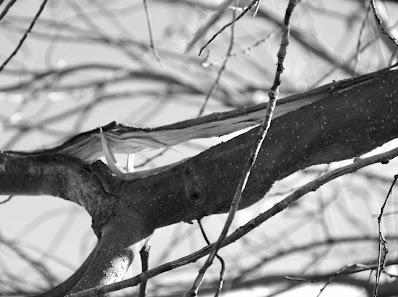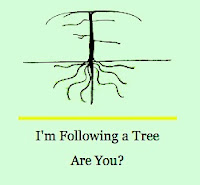 |
| For geologist and bishop Nicholaus Steno, science was a way to understand God's work (source). |
On the morning of August 13,1894, mason Michael Bergin picked up a stone to add to the new Episcopalian church in Laramie, Wyoming. But upon inspecting it, he spotted a fossil very different from the others he had found.
"CURIOUS FOSSIL. Found in the Sandstone Rock of the Cathedral" announced a headline in the Laramie Boomerang (newspaper) later that day. "It is a shell exactly like a miniature buffalo head ... the solid part corresponding to the head is about an inch in diameter, the horns about an inch long and three inches from tip to tip." Bergin set the stone aside for Professor J.D. Conley, curator of the University of Wyoming Museum.
Stonemasons at St. Matthew’s Cathedral regularly found fossils, saving the better ones for Professor Conley. He had already identified the clam-like allorisma, snail-like bellerophon, and pinna, which resembled a razor shell oyster. "The professor is gathering facts to put into a bulletin on the subject," explained the Boomerang.
But the article ignored the remarkable mystery these creatures implied. They were marine—all inhabitants of oceans. Yet the stones were quarried just east of Laramie. How did sea shells end up so far from a sea, and 7000+ feet above sea level?
A Persistent Question
Four centuries earlier, in the Apennine Mountains of Italy, scientist Nicholaus Steno asked the same question, but in Latin: “Quomodo res marinae in locis a mari remotis derelictae fuere?” How was marine life abandoned in places far from the sea?
No answer was immediately forthcoming. In the 1600s, geology did not exist, and knowledge was strongly shaped by church teachings, which did not address things like sea shells high in the mountains. Steno had to rely on field work and his own clever mind to solve the puzzle.
After examining many specimens, all of which looked like sea shells down to the finest level of detail, he concluded they were sea shells, now entombed in rock. They must have risen from sea level, thousands of vertical feet! This meant the surface of the Earth was dynamic, changing dramatically since the Creation. Steno's findings contradicted strict biblical interpretation—that God had created an immutable Earth—but the Church did not object. Science was increasingly seen as a way to understand and appreciate God's work.
 |
| Steno's interpretation of an angular unconformity, from his Prodromus, 1671. |
Revelations
How appropriate then that St. Matthew’s Cathedral contributed to our understanding of local geology. Specifically, the fossils revealed when the rock formed. "These specimens all serve to identify and locate more definitely [in time] the geological formation of the sandrock lying east of the city ... This is the carboniferous [Period] in the upper Paleozoic [Era]."
But the Boomerang mentioned none of the immense numbers geologists love—millions, hundreds of millions, billions of years. That's because in 1894 there was no way to determine absolute ages of rocks. We now know the Cathedral sandstone formed sometime between 325 and 300 million years ago, when much of southeast Wyoming was submerged.
For millions of years sand, shells, and limey muck accumulated on the floor of that Paleozoic sea. Then they lay buried for several hundred million years more, gradually changed to sandstone and limestone.
The Rocks Rise
While Nicolaus Steno was convinced that rocks could rise thousands of feet, he never came up with an explanation for how. In fact, how mountains rise proved to be a most persistent question. It wasn't until the mid 20th century that it was answered satisfactorily: The Earth's surface consists of giant shifting plates that collide, sink, override, fuse, and more. The effects can be dramatic.
Between 70 and 30 million years ago, the Pacific plate was diving under the North American plate, compressing and crumpling the interior of the continent, creating among other things the Rocky Mountains. With uplift of the Laramie Range, ancient marine limestones and sandstones, carrying fossil shells, rose thousands of vertical feet. Erosion later exposed these rocks, setting the stage for Laramie's promising building stone industry.
 |
Quarrying stone just east of Laramie; date unknown.
American Heritage Center, University of Wyoming (AHC).
|
Inexhaustible Supply of Rock
On May 11, 1886, the Boomerang proudly announced "Vast Deposits of Sandstone Only Three Miles from Laramie." This was great news. Planning was underway for the University of Wyoming's first building, to be constructed entirely of sandstone. However the nearest quarries were in Rawlins and Ft. Collins; transportation probably would be too costly.
Ever the civic promoter, the Boomerang declared Laramie's stone to be "equal to any in the world. ... It is useless to send to Colorado at great expense for rock which is not one particle superior, either in strength, beauty, evenness ..." The local quarries were inspected, the stone tested. In August, a contract was signed. The University Building (today's Old Main) rose quickly, completed in time for the first classes in September 1887.
 |
| Old Main under construction, University of Wyoming, ca. Dec. 1868 (AHC). |
Though the industry never became a booming business, Laramie's dimensional stone was used in local buildings into the 1950s. These included the Albany County Courthouse, Ivinson Mansion (Laramie Plains Museum), Ivinson Home for Ladies, many buildings on campus, and perhaps most spectacularly, St. Matthew's Cathedral.
"One of the Most Beautiful and Complete Churches in the entire Western Country"
In 1892, on September 21 (St. Matthew's Day), the Boomerang gave front-page coverage to the laying of the cornerstone of St. Matthew's Cathedral. In the recently completed basement, hundreds listened to distinguished clergymen speak eloquently and at length. Then three officers from the Grand Lodge of the Free Masons—equipped with square, level, and plumb—set the stone.
 |
| St. Matthew’s Cathedral as originally planned; the final was somewhat smaller. Laramie Boomerang, Sep 22, 1892. |
It was said that the Cathedral would be completed within a year. But the walls would rise in spurts, as funding waxed and waned. Bishop Ethelbert Talbot traveled far afield in his fund-raising. Big donors included friends in the east, such as Cornelius Vanderbilt ($1500) and J.P. Morgan ($1000), and the Mother Church in England.
By the end of 1896, the grand structure was ready to serve its congregation and was dedicated before a crowd of almost a thousand on December 17. Twenty years later, Edward Ivinson made a large donation in memory of his wife, Jane, to finish the towers.
 |
| St. Matthew's Cathedral before towers were completed (in 1916); photo ca. 1910-1915 (AHC). |
 |
St. Matt's in 1935 (AHC).
|
According to common knowledge, the cathedral stones came from the university quarry, nine miles northeast of Laramie. But an 1894
Boomerang article about a proposed railroad building suggests otherwise. Planners noted that cathedral stone was less expensive than university stone, as the cathedral quarry was closer to town. But which of today's abandoned quarries it was remains a mystery.
Adding to the puzzle is confusion regarding rock type. Cathedral descriptions variously refer to limestone, silicious limestone, limey sandstone, or sandstone. The Casper Formation, where Laramie's quarries were developed, contains all of these.
Reading the Casper Formation
To a geologist, a formation is a group of rocks that is both recognizable and extensive enough to map. The Casper Formation extends from Casper Mountain south along both sides of the Laramie Range into Colorado. It's a mix of limestone, sandstone and everything in between. Herein lie important geological clues!
Geologists say they study the past by "reading the rocks." What have they learned by reading the Casper Formation? We already know from its fossilized sea shells that there was an ocean here 300 million years ago. But there's more.
Let's start with limestone, which forms from limey muck deposited in deep water far from shore, out of reach of sediments from land. The northern part of the Casper Formation is dominated by limestone, indicating the area around the towns of Casper and Douglas was submerged in deep water during much of the Paleozoic Era (tour map below shows features mentioned here).
But in the Laramie area, the Casper is mainly sandstone with occasional beds of limestone. Sand, being coarse, doesn't travel far, so sandstone is a sign of shallower water closer to shore. The limestone beds are a bit of a mystery, with geologists still debating the details. Most likely they formed when the sea advanced, perhaps with rising sea level. So Laramie probably was in deep water occasionally, the shoreline farther away.
The Casper Formation also contains clues about the shoreline itself. Not far south of Laramie are outcrops of cross-bedded sandstone (criss-crossed layers). These are remains of sand dunes deposited by wind along the ancient shore.
Just beyond the dune field was the Ancestral Front Range. We know of these ghostly mountains because the Casper sandstone contains abundant feldspar. Feldspar is a soft mineral that breaks down quickly. It must have been carried to the sea by fast-flowing streams from mountains close by.
Tour Paleozoic Laramie
 |
| Yellow very roughly outlines the Casper Formation (above and below ground). |
With an able imagination, you can tour the Laramie area 300 million years ago. Start in a dune field at the foot of the Ancestral Front Range. Venture into shallow waters of the Paleozoic sea and then to its depths. At the final stop, careful beach combing should turn up some of its ancient inhabitants.
1. Sand Creek National Natural Landmark straddles the state line along Sand Creek Rd. (CR 34; gravel) about 19 mi south of Laramie. Amidst monuments and hoodoos of cross-bedded sandstone, imagine yourself in a field of dunes at the base of a rugged mountain range, looking north across the Paleozoic sea. The Landmark is mostly private with two small parcels of WY state land; an ownership map is needed to explore beyond the road.
 |
"Grotto at Sand Creek"—S.H. Knight photo, 1899 (AHC).
|
2. Visit
Roger Canyon to see the Paleozoic seafloor up close. From Reynolds St. in Laramie, go north on 9th about 0.7 mi to where it becomes Roger Canyon Rd. ZERO YOUR TRIP ODOMETER HERE. At 6.9 mi ("No Winter Maintenance" sign) stop in the tiny turnout right (private land; stay on shoulder). Across the road is the reclaimed university quarry. Here the Casper is limey sandstone (well-cemented). Head up the canyon. At 8.0 mi, you will enter public land and limestone—having traveled back in time to when the water was deeper and the seafloor covered in limey muck. Public land continues for about a mile.
 |
| Chris and Ed of Laramie brave the smokey air to ascend lithified seafloor muck in Roger Canyon. |
3.
St. Matthew's Cathedral stands on the northeast corner of Ivinson and 3rd. Wander the grounds to admire Laramie's fine dimensional stone in the walls of the highest Cathedral in the US (steeple reaches 7276 feet above sea level). Search for sea shells in the exterior stone, but please don't touch (binoculars are handy).
About that Miniature Buffalo ... any ideas?
Professor Conley reportedly left Laramie in a huff in 1896, having been passed over for department head. The fate of the Cathedral specimens is unknown, and no bulletin was published. Michael Bergin’s curious fossil remains among the mysteries of the Casper Formation ... unless you recognize it. If so, please leave a Comment below!
This is my latest contribution (with extra photos) to the Laramie History series in the Laramie Boomerang (published August 30, 2020).

























































